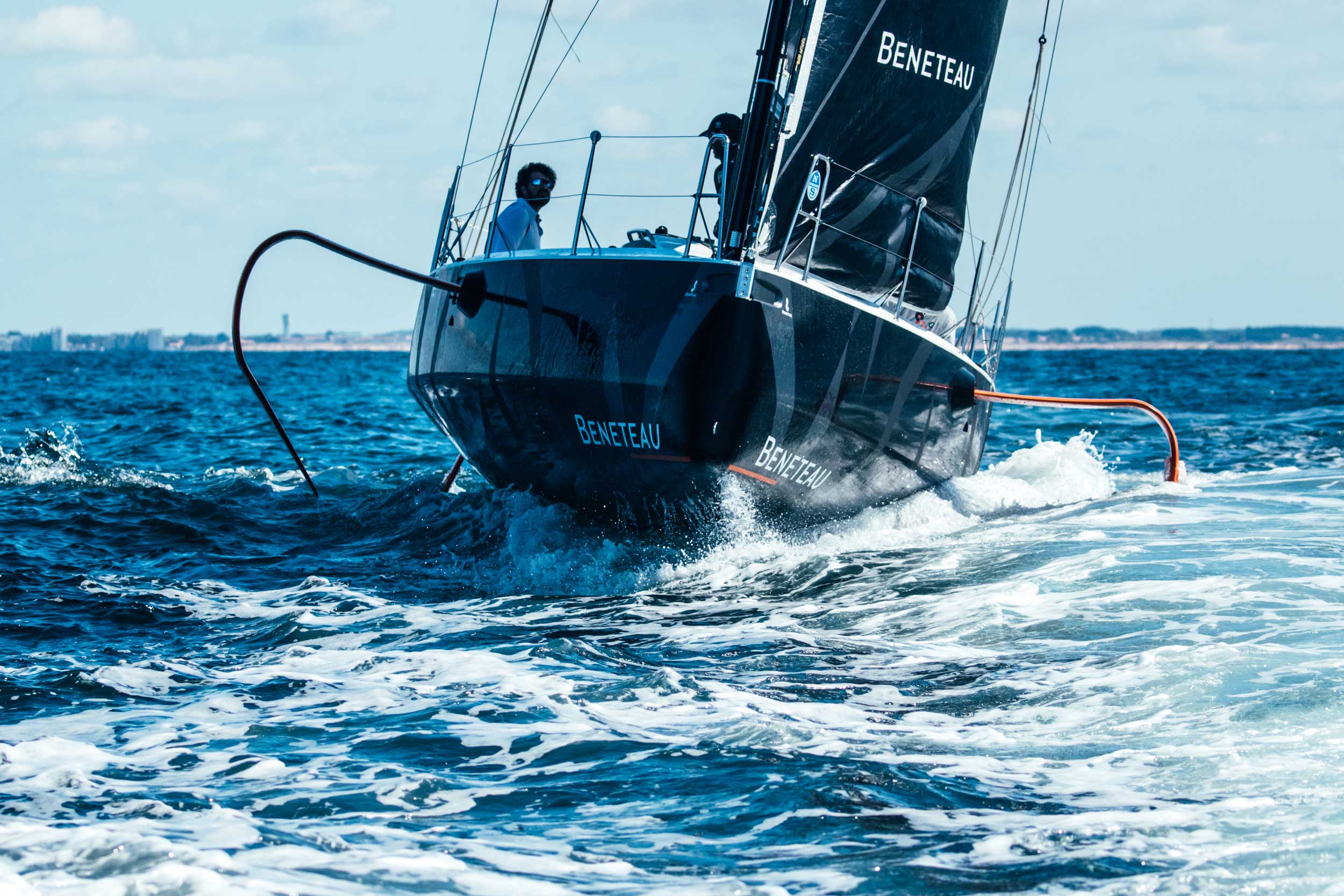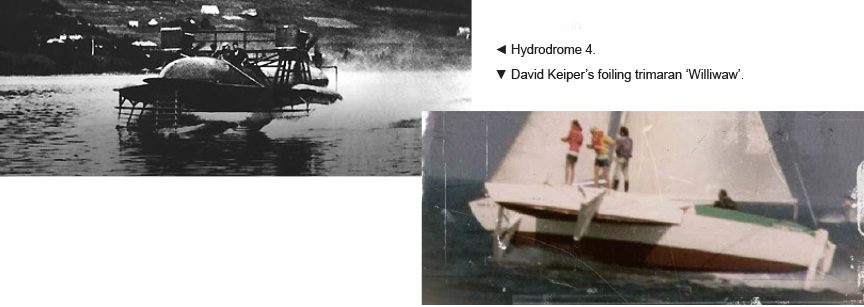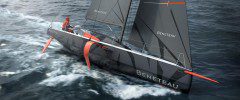
The Development of Foiling Sailboats
13 December 2017
Following the recent launch of the new Figaro Beneteau 3, we take a look at how foiling has become so prominent in our sport. From cruising trimarans to racing catamarans and new offshore monohulls, foiling is taking off in sailing – literally! But how did it all come about? And where is it heading? Here we give you a brief history of the development of foiling sailboats and take a look at some of the most exciting foiling classes on the water today…
Development of Foiling – 100 Years in the Making
Foiling may seem like a recent technological phenomenon but it has actually been 100 years in the making. The first development of a foiling water vessel was a 60hp motorboat designed and built by Italian inventor Enrico Forlanini in 1906. Later, in 1919, Alexander Graham Bell broke the world marine speed record with his Hydrodrome 4.
It wasn’t until the 1960’s and 1970’s that foiling technology was introduced to the military and used commercially with the launch of the Boeing Jetfoil, first serving the Hawaiian Islands and later Hong Kong and Macau.
The first significant development of foiling in the sport of sailing was David Keiper’s foiling trimaran ‘Williwaw’ which cruised many nautical miles around the Pacific. Then, in 1980, Éric Tabarly sailed the foiling trimaran ‘Paul Ricard’ across the Atlantic. Later, at the turn of the millennium, we saw the first signs of foiling sailboats performing well on the race course with the Moth pioneering the concept and first putting it into action.
Moth
The Moth class has been key to the development of foiling in monohull sailboats. Most notably, Brett Burvile’s foiling moth was the first model that proved to be very quick on the reaching courses of the Moth Worlds in Perth. Subsequently, the Moth Class committee adjusted the One Hull Rule to encourage the development of foils in this monohull class. What followed was a rapid development of technology within the class to lead it to become one of the leading racing foiling sailboat classes in the world today.
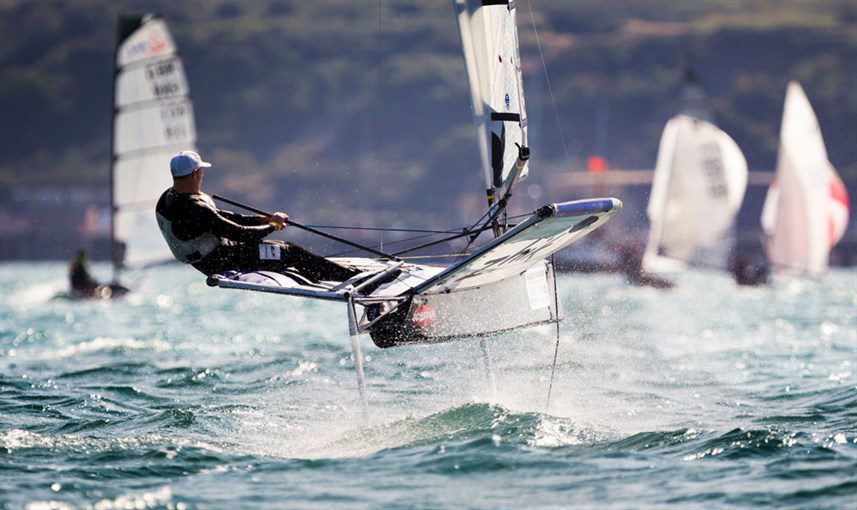
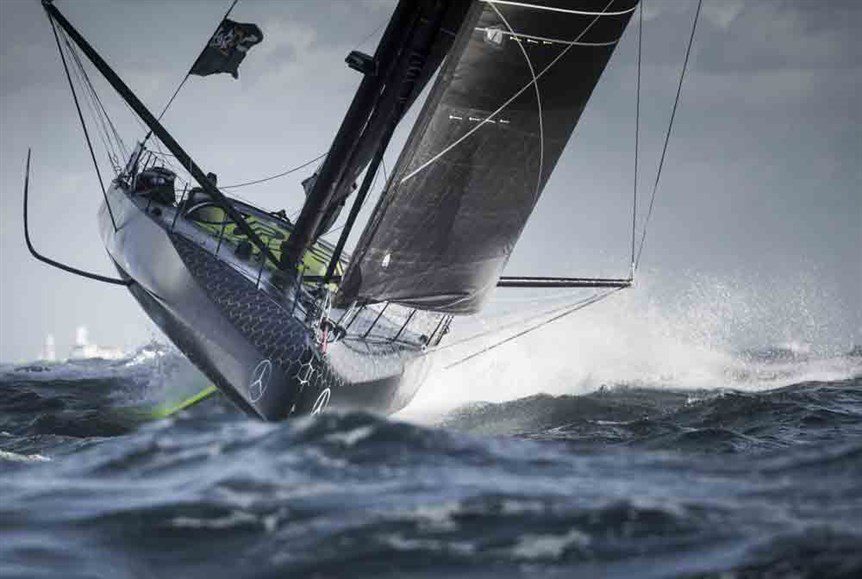
60ft Foiling Monohulls – Vendee Globe
The 2016-2017 Vendée Globe race saw foiling 60 ft single handed boats race non-stop around the world for the first time. This is a huge development in the IMOCA class and foiling is a feature that is set to grow in future editions of this iconic “Everest of the seas” event. With improvements in speed of over several knots downwind, the foiling IMOCA 60’s are performing well on the race track. British sailor, Alex Thomson, came an impressive second overall in the latest race aboard his foiling IMOCA 60, despite damage to one of his foils early on in the race. The other two podium placed IMOCA’s were also foiling boats and a new race record was set by winner, Armel Cléac’h, fueling the idea that foiling Open 60s may be here to stay.
Figaro Beneteau 3
The first production foiling one-design monohull, the Figaro Beneteau 3, is big news in the world of foiling sailboats. Created through a collaboration of Groupe Beneteau’s expert design team and winning Vendée Globe boat architects Van Peteghem Lauriot-Prévost (VPLP), the Figaro Beneteau 3 is certainly turning heads. The foils have an inward-facing profile to reduce drift and improve righting moment, thus increasing performance. This new model is expected to be as much as 15% faster than its predecessor, so is set to be a significant turning point for the class. With a prototype launched this summer, the new design is already receiving great reviews and is expected to be on the startline of the 50th edition of the Solitaire in 2019.
Figaro Beneteau 3
The first production foiling one-design monohull, the Figaro Beneteau 3, is big news in the world of foiling sailboats. Created through a collaboration of Groupe Beneteau’s expert design team and winning Vendée Globe boat architects Van Peteghem Lauriot-Prévost (VPLP), the Figaro Beneteau 3 is certainly turning heads. The foils have an inward-facing profile to reduce drift and improve righting moment, thus increasing performance. This new model is expected to be as much as 15% faster than its predecessor, so is set to be a significant turning point for the class. With a prototype launched this summer, the new design is already receiving great reviews and is expected to be on the startline of the 50th edition of the Solitaire in 2019.
Foiling Multihulls
America’s Cup AC72, AC50 and AC45
Some of the most noteworthy racing foiling catamarans in recent years have to be those from the 2013 and 2017 America’s Cups. The AC72’s proved that large format foiling catamarans could be raced at extreme speeds and on tight courses, making for a challenging event for the crews and exciting spectacle for fans. This concept was further developed for the 2017 America’s Cup with the AC50s and the Youth America’s Cup in the AC45s. The introduction of foils into this pinnacle sailing event has seen speeds accelerate phenomenally, resulting in high octane racing on the water. The America’s Cup Teams have also invested significant amounts of money into research and development of foiling technology, the results of which are likely to trickle down and raise the bar for other foiling classes as a whole.
GC32
The GC32 is a 10m long by 6m wide foiling catamaran created through the collaboration of Laurent Lenne, Dr Martin Fischer, Head of Design at the Groupama Team France America’s Cup team, and Premier Composite Technologies. Fitted with T-foil rudders and J-shaped daggerboards, the GC32 can reach speeds of up to 40 knots. But with no hydraulics, no pedestals and a more manageable, easier to trim soft-sail rig, the GC32 is designed to be more accessible than some of the larger foiling multihulls on the water. The Extreme Sailing Series and GC32 Racing Tour are the pinnacle events for the class, attracting both pro-am and commercial teams, from all over the world, who want to get involved with the fast paced sailing action.
Nacra 17
After making its first appearance at the Olympic Games in 2016, the Nacra 17 has been developed to incorporate curved foiling daggerboards for extra lift and speed. The first Nacra 17 World Championship with the new foiling configuration took place in France in September this year with a view to the Foiling Nacra 17 competing at the Olympic Games Tokyo in 2020. This will be the first time that foiling sailboats will appear at the Olympics so will be a huge milestone for foiling multihull dinghy sailing.
Foiling Future
What the future of foiling sailboats looks like is unknown, but what seems clear is that it is a format that is providing lots of fun and excitement for many sailors and is probably here to stay. With foiling playing a pinnacle role at high profile sailing contests such as the Vendée Globe, Solitaire, America’s Cup and the Olympics, it is an aspect of the sport that will continue to grow and the advancing technology that is arising from the research and development made by the big race teams will probably trickle down into more accessible and affordable formats for mainstream sailing. There is certainly a place for both foiling and non-foiling boats on the market and we look forward to seeing how this new aspect of our sport develops in years to come.

Quick Q&A with Land Rover BAR Academy Skipper Rob Bunce
What was it like to sail a foiling boat for the first time?
Pretty scary to start with. The noise is the first thing that gets you and the acceleration is like no other boat I have sailed. It was pretty difficult to keep the grin off my face.
What do you enjoy most about racing foiling boats?
The intensity of the racing is fantastic. With just one gust you could foil past everyone, so the fleet stays very tight. The reaching starts create some incredible close racing at speeds in excess of 30 knots with the boats only inches from each other at times.
Foiling boats are much quicker than non-foiling boats and on the AC45 and GC32 you are on a very small racetrack - how have you had to adapt your skills to race at such fast speeds?
The boats are certainly very physical and when you throw in a short course there are lots of manoeuvres with no time to catch your breath in between. Every sailor has to be on top of their game from a fitness point of view. With each position onboard posing a slightly different physical challenge it’s key to be very specific with your training so you become the best in your area. It’s also important to analyse all of the boat-handling skills and realise that grunt isn’t always the solution. The best sailors on these fast boats are the most efficient, not necessarily the outright strongest.
Rob Bunce is Skipper for the Land Rover BAR Academy. The team won the Red Bull Youth America’s Cup this year and are currently competing in the Extreme Sailing Series.
